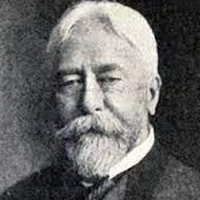Gustav Lindenthal
Gustav Lindenthal was a civil engineer who designed the Hell Gate Bridge in New York City, among other bridges. Lindenthal’s work was greatly affected by his pursuit for perfection and his love of art. His structures not only serve the purpose they were designed for, but are aesthetically pleasing to the public eye.
Gustav Lindenthal, Austrian-born American civil engineer known for designing Hell Gate Bridge across New York City’s East River.
Lindenthal was born in Brünn, Austrian Empire, now Brno, Czech Republic in 1850. Lindenthal began to receive practical training in 1866 when he was employed as a mason and carpenter.[2] At the age of 18, Lindenthal left his family to set out to make a life of his own in Vienna, Austria Where he joined as an assistant in the engineering department for the Empress Elisabeth Railway of Austria. Two years later he joined the Union Construction Company, where he gained experience in building inclined planes and railroads.
After gaining experience working on railways and bridges in Austria and Switzerland, Lindenthal immigrated to the United States (1871). He served as a construction engineer at the Philadelphia Centennial Exposition (1874–77) and then went to Pittsburgh as a consulting engineer in railway and bridge construction. In 1881, Lindenthal established his own consulting business and built four bridges in the Pittsburgh area: In 1884, he founded the North River Bridge Company in New York, with the intent of building a massive bridge over the Hudson River for the Pennsylvania Railroad. Subsequently he was appointed commissioner of bridges (1902–03). There he designed and acted as consulting engineer for the Hell Gate Railway bridge, which opened for traffic in March 1917. At that time Hell Gate was the longest (977 feet [298 m]) steel arch in the world. The
Lindenthal designed the Queensboro (cantilever) Bridge, also over the East River, and was a consulting engineer for railroad tunnels under the Hudson and East rivers. Lindenthal worked on several other bridge projects around the country in the 1920s.[3] Perhaps his most famous and lasting achievement outside of New York is the massive Sciotoville Bridge across the Ohio River, completed about the same time as the Hell Gate Bridge.

Gustav Lindenthal
Date of Birth: 21 May 1850
Birth Place: Brno, Czechia
Proffession: Civil engineer
Nationality: United States
Death: 31 July 1935, Metuchen, New Jersey, United States


